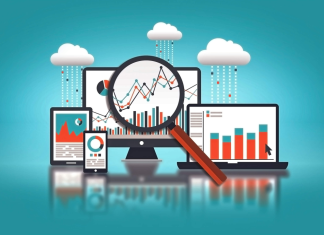Last Updated on 06/02/2022 by TheDigitalHacker
Introduction
The healthcare industry has grown rapidly over the years given the rise of the covid-19 pandemic. This growth has come at the cost of people’s lives that have suffered tremendously. The healthcare infrastructure of the world was collapsing due to the unavailability of enough doctors, equipment, beds, and other personnel that ensure smooth operations within the hospitals. This experience will help people to secure their health problems through insurance schemes and proper savings for future uncertainties and the governments of the world taking needful measures to protect their citizens.
General Overview of the Healthcare Industry
- Healthcare takes more than 10% of the GDP of most developed countries.
- This isn’t surprising—the healthcare sector is the US’s largest employer.
- Incidentally, the US spends considerably more than the world’s average on healthcare.
- The global health industry was worth $8.45 trillion in 2018.
- Global healthcare spending could reach over $10 trillion by 2022.
- The US has the greatest healthcare spending, sitting at $10,224 per capita.
- The US spends twice what other countries do on healthcare.
- The US spends the most on health per person, followed by Switzerland and Germany.
- There are 784,626 companies in the US healthcare sector.
- McKesson is the biggest US healthcare company with annual revenue of $208.3 billion.
- The internet of things (IoT) can lower the costs of operational and clinical inefficiencies by $100 billion per year.
- 64% of physicians believe the IoT can help reduce the burden on nurses and doctors.
- 28% of China’s population uses connected health devices, the highest in the world.
- The average healthcare employee earns $60,976 a year in the US.
- Hawaii is the top state for healthcare in the US.
- In 2018, this sector was worth $8.45 trillion, with an annual growth rate of 7.3% since 2014.
- Around 75% of healthcare facilities such as clinics and hospitals were found to be unprepared when it came to responding to cyber-attacks
- Currently, nearly 96% felt that attacks on healthcare software and infrastructure have increased and have placed healthcare facilities at risk.
- 92% of providers of various healthcare solutions are promoting the use of digitization for healthcare facilities.
- These are the top 10 countries with the best healthcare in the world-Canada, Qatar, France, Norway, New Zealand, Germany, Hong Kong, The Netherlands, Switzerland, and Singapore
- At present, 800 million people spend 10% of their monthly budget or more on healthcare expenses.
- For nearly 100 million of this group, their healthcare expenditures are high enough to push them into severe poverty.
- Based on this estimate, 11.5% of the world population will be over 65 years of age by 2021.
- Additionally, due to the increased consumption of processed foods, chronic health conditions like diabetes are expected to become more common.
- Low-income families and people of color tend to be less healthy than other members of the population and are more likely to have more than one chronic condition.
- As per the research of Harvard Medical School, Online symptom checkers are wrong 66% of the time when it comes to diagnosis.
- As per Centers for Medicare & Medicaid Services predicted that Healthcare expenditures reach beyond $5.7 trillion in the US include payments for all healthcare costs, including pharmaceuticals, equipment, and technology from 2010 to 2026. Also, there are 1.26 million job openings in US healthcare per year.
- As per the Market Research Future (MRFR), Global Medical Tourism Market is poised to touch USD 226,762.7 million by 2023 at an impressive 21.4% CAGR during the forecast period (2017-2023).
- As per the CEO World Magazine research, Taiwan has the best health care systems in the world. Out of the 89 countries surveyed, Taiwan’s healthcare comes in 1st place on the list scoring 78.72 out of 100 on the Health Care Index.
- As per the Business Insiders research, Heart valve disorders is the most expensive health conditions in the US. 41,878 $ is the average cost per stay for a Heart valve disorders health condition.
- As per the research of the American Dental Association (ADA), annual dental spending is estimated to be $148.3 billion in 2020 and $154.9 billion in 2021.
- As per Research and Markets predicted that Global healthcare market reached a value of nearly $8,452 billion in 2018, having grown at a compound annual growth rate (CAGR) of 7.3% since 2014, and is expected to grow at a CAGR of 8.9% to nearly $11,908.9 billion by 2022.
- As per the research of Statista, Total health spending per person globally in 2017 averaged some 1,100 U.S. dollars which are estimated to increase to 1,800 U.S. dollars by 2050.
- As per the research of Statista, the U.S. share of total global health expenditures was at 41 percent and was forecasted to decrease to 35 percent during the coming decade until 2028.
- Indian and South Korean shares of global health expenditures were forecasted to grow to 3 and 2 percent, respectively.
- As per the research of IHS Markit, Global healthcare spending was forecasted to decline by 0.1% to USD 8.3 trillion in 2020 before growing 5.8% to USD 8.8 trillion in 2021.
- As per the research of The Business Research Company, The global medical devices market reached a value of nearly $456.9 billion in 2019, and it is expected to reach $603.5 billion in 2023.
- As per the research of Statista, in 2018, the North American healthcare AR and VR industry was valued at 477 million U.S. dollars. By 2028, that is expected to increase dramatically to 4.64 billion U.S. dollars.
- As per the research of Healthcare IT News, Artificial Intelligence and Machine learning (AI/ML) is most widely perceived to be delivering value in specialty care (radiology, pathology, pharma, etc), telehealth, remote health monitoring, etc.
- According to the analysis of Accenture, when combined, key clinical health AI applications can potentially create $150 billion in annual savings for the United States healthcare economy by 2026.
- As per the research of eMarketer.com, 45.8 million US adults used a wearable device at least once a month in 2017 and it is expected to reach 67 million US adults who will use a wearable device at least once a month in 2022.
- As per Juniper Research, the consumers and businesses combined will save over 2.5 billion by 2023 in the healthcare sector by leveraging chatbots.
- The female end-users segment was the largest segment of the healthcare market in 2018 at 52.6%.
- The male end-users segment is expected to be the fastest-growing segment going forward at a CAGR of 9%.
- North America was the largest market for healthcare, accounting for 41.9% of the global market in 2018. It was followed by Asia-Pacific, Western Europe, and then the other regions.
The Dark Side of the Healthcare Sector
- According to an UN-backed report, 3.5 billion people—accounting for more than half of the world’s population—don’t have access to basic health services.
- No less worrying, out-of-pocket healthcare expenditures force 100 million people to survive on $1.90 or less a day.
- For instance, according to a news report, 20% of Americans don’t have the means to access needed health care.
- Overall, research shows more than half of the world can’t access or afford the healthcare they need.
- The two biggest driving factors are an aging population and a higher prevalence of chronic diseases.
Impact of Covid-19

- The coronavirus pandemic has laid bare the healthcare system, with revenues tumbling by around 50% in the United States alone.
- About 2/3 issuers currently rated by Fitch currently have a stable outlook, 17% a negative outlook, and 10% a positive outlook.
- COVID-19 ignited unprecedented collaboration across organizations, industries, academia, and governments and irrefutably demonstrated the value of partnering to deliver new solutions and improved outcomes.
Prospects of the Health Industry
- The thriving health insurance industry and rising healthcare expenses are the key contributing factors.
- The survey shows that 98% of pharmaceutical and life science executives expect digital investment in clinical trials to increase in the coming years.
- According to DataBridge Market Research, the health insurance market is growing at a CAGR of 4.4% and is expected to reach $2,259,670.09 million by 2027.
- Experts predict a massive acceleration of digital technology in healthcare, which includes cloud computing, data security, and other tools.
- Life and health insurance premiums will rise to 2.9% to around $4 trillion but will recover to around 3% growth by the start of next year.
- A heightened sense of health risk awareness and financial market conditions that are normalizing will drive the rebound.
- In 2018, the global healthcare sector’s revenue was $1.853 trillion, an increase of 4.5% on a year-on-year basis.
- Worldwide, the average life expectancy is expected to rise from 73 years to 74.1 years between 2016 and 2021.
- As per the research of Statista, It is estimated that the global big data market related to healthcare in 2016 and a forecast for 2025 period, the market will increase from around 11.5 billion to nearly 70 billion U.S. dollars.
- As per the Markets and Markets research, the global Artificial Intelligence in healthcare market size was expected to grow from USD 4.9 billion in 2020 and reach USD 45.2 billion by 2026; it is projected to grow at a CAGR of 44.9% during the forecast period.
- As per the research of Markets and Markets, The wearable fitness technology market was worth USD 5.77 billion in 2016 and USD 12.44 billion by 2022, growing at a CAGR of 13.7% from 2016 to 2022.
- Going forward, the fastest-growing segments in the healthcare market will be biologics and veterinary healthcare, where growth will be at CAGRs of 13.6% and 10.9% respectively.
- Going forward, the fastest growing regions in the healthcare market will be the Asia Pacific and Africa, where growth will be at CAGRs of 13.4% and 13.1% respectively.
- These will be followed by the Middle East and South America where the markets are expected to grow at CAGRs of 12.8% and 10.7% respectively.
- The top ten competitors in the market made up to 7.2% of the total market in 2018.
- Players in the market include UK National Health Service, Kaiser Permanente, Johnson & Johnson, Pfizer, and Novartis AG.
- The global healthcare market for female end-users will offer the most opportunities as it will gain $1,807.8 billion of global annual sales by 2022.
- In 2019, the global digital health market was worth an estimated 175 billion U.S. dollars. With an expected CAGR of almost 25 percent from 2019 to 2025, the digital health market should reach nearly 660 billion dollars by 2025.
Healthcare Occupations

- Employment in healthcare occupations is projected to grow 16% from 2020 to 2030, much faster than the average for all occupations, adding about 2.6 million new jobs.
- This projected growth is mainly due to an aging population, leading to greater demand for healthcare services.
- The median annual wage for healthcare practitioners and technical occupations (such as registered nurses, physicians and surgeons, and dental hygienists) was $69,870 in May 2020, which was higher than the median annual wage for all occupations in the economy of $41,950.
- Healthcare support occupations (such as home health aides, occupational therapy assistants, and medical transcriptionists) had a median annual wage of $29,960 in May 2020, lower than the median annual wage for all occupations in the economy.
Conclusion
The industry has seen a positive rise in R&D with regards to advanced technologies being used to treat patients more effectively and safely. There is still a significant population that can’t afford basic health facilities and efforts need to be made to safeguard their lives.










